Table of Contents
● Introduction
● Understanding the main types of cooking tool sets
● Market trends and insights for 2025
● Key factors to consider when selecting cooking tool sets
● Top-rated cooking tool sets for 2025
● Conclusion
Introduction
In the changing landscape of kitchens, having top-notch cooking utensils is becoming more and more crucial. From spatulas and tongs to gadgets, these tool collections are vital for boosting cooking efficiency and accuracy. Choosing the ideal set can greatly enhance your skills, making tasks like flipping delicate omelets or stirring thick sauces a breeze. In 2025s, upcoming trends in selection will prioritize tool sets that cater to needs while also emphasizing durability, heat resistance, and ergonomic design.
Understanding the main types of cooking tool sets
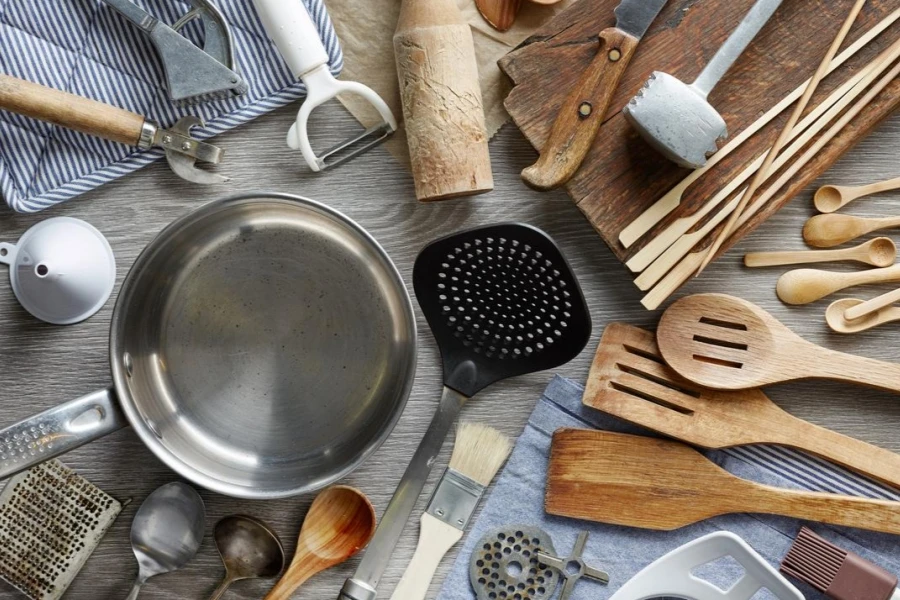
Silicone, stainless steel, and wood: Core materials and their applications
Materials commonly used for cooking utensils include silicone, wood, and stainless steel; each material has distinct advantages. Silicone is favored for its flexibility and ability to withstand heat while also being nonstick. This is a combination that makes it perfect for tasks like stirring sauces or scraping bowls. Additionally, silicone’s heat resistance and compatibility with dishwashers further enhance its usefulness in a variety of kitchen tasks.
Stainless steel tools are appreciated for their robustness, longevity, and ability to resist corrosion, which makes them ideal for tough jobs such as turning meat or mixing stews. In contrast, wooden utensils are valued for their inherent antibacterial qualities and gentle treatment of cookware, especially suitable for nonstick pans and cast iron surfaces despite requiring more upkeep. The classic appeal of wood, along with its versatility in different cooking activities continues to make it a timeless option for any kitchen setting.
Essential tools and their functions in modern kitchens
Having the right set of cooking utensils is crucial for any kitchen enthusiast. Think of spatulas for flipping and stirring ingredients or tongs for handling hot food items with precision and ease. Whisks are key for achieving that blend in your recipes; silicone whisks are great for pans, while stainless steel ones tackle heavier mixing tasks effortlessly.
In every kitchen setting, ladles and spoons play a crucial role in mixing and serving dishes. Wooden spoons are great for being gentle with delicate pots and pans, while stainless steel ones last longer without losing their shine or strength over time. When it comes to flipping pancakes or frying eggs, you have your turners and flippers, whether it’s silicone for those delicate nonstick surfaces or stainless steel for those heavier meals that need a little extra muscle. These trusty kitchen companions are the heart and soul of any cooking space; it’s about picking the right material and design to make your culinary tasks easier and ensure these tools stand the tests of time in today’s modern kitchens.
Market trends and insights for 2025
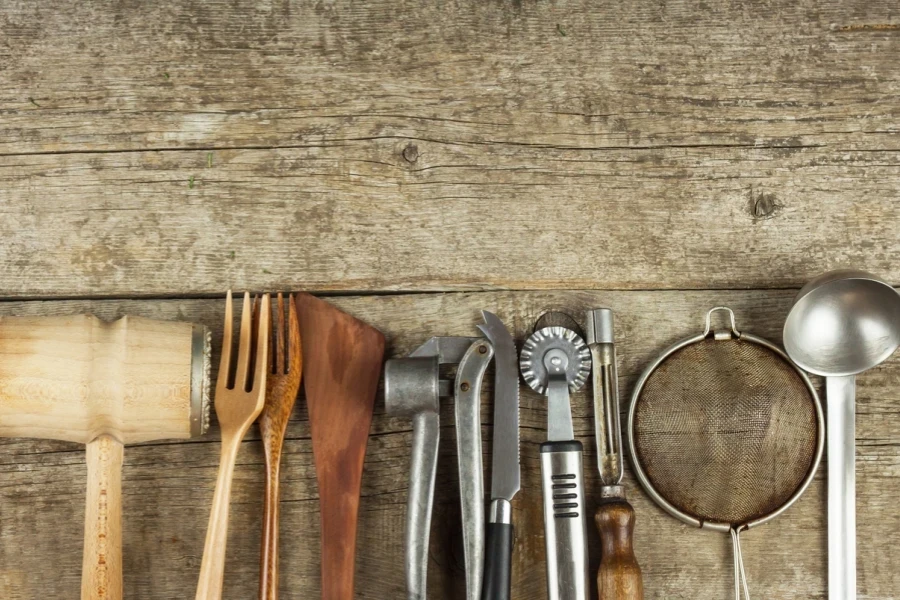
Growth and demand in the cooking tools segment:
The cooking tool sets market worldwide has seen an uptick in growth thanks to a rise in consumer enthusiasm for cooking at home and embracing healthy food choices. Findings from the Grand View Research analysis report indicate that the market is expected to expand from USD 4 billion in 2024 to close to USD 6 billion by 2028, with a growth rate of around 6 percent. The growth in this area is influenced by factors like the increasing viewership of cooking programs and social media personalities advocating for healthier dishes and the surge in home cooking brought on by the COVID-19 outbreak. As people become more discerning about their choices, there is a rising need for high-quality quality, versatile, and environmentally friendly kitchen tools.
Emerging trends in material preferences and design:
Consumers are increasingly favoring materials such as bamboo in addition to choices like silicone and stainless steel due to their eco-friendly nature. Contemporary designs focus on simplicity and practicality while ensuring comfort to enhance the look of kitchen spaces. Moreover, technology plays a role in cooking tools by incorporating smart functions like temperature sensors that enable users to manage cooking tasks with precision. These emerging trends underscore the rising preference for top-notch kitchen tools that are both environmentally friendly and equipped with features driving the ongoing evolution of the market. Different types of pots and pans that work well with cooking materials.
Key factors to consider when selecting cooking tool sets
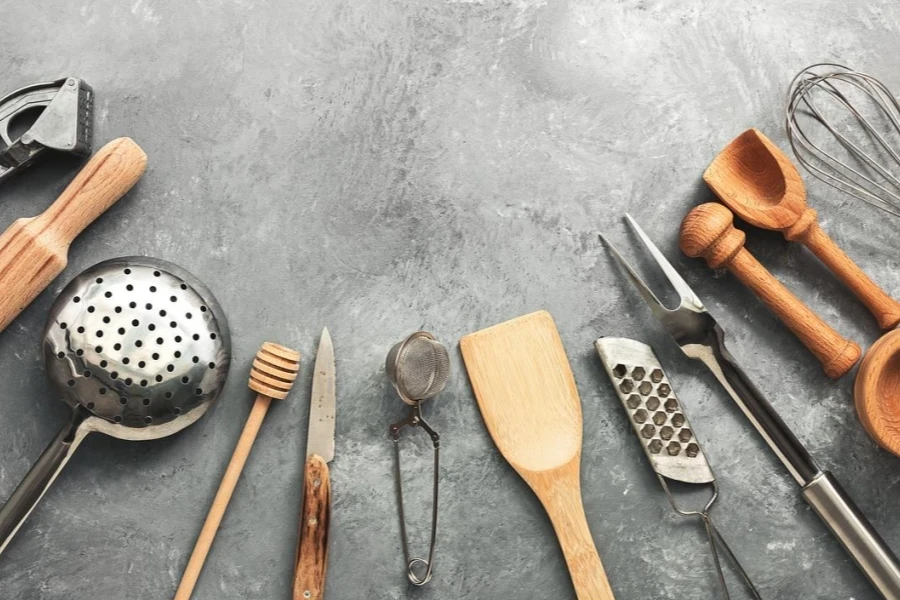
Material compatibility with different cookware:
When it comes to cooking tools, selection based on compatibility is essential to safeguard your cookware and ensure top-notch performance. Nonstick pots and pans specifically require utensils crafted from materials like silicone or wood to avoid any scratching; silicone stands out due to its flexibility and resistance to temperatures. On the other hand, stainless steel utensils are best suited for steel and cast iron cookware as they can endure heavy-duty applications without causing any harm. However, it’s crucial to avoid using stainless steel tools with nonstick surfaces to prevent scratches; matching the right utensils with cookware is key.
Heat resistance and durability:
Cooking tools need to handle hot temperatures for methods like grilling or baking to work. Silicone utensils are durable and versatile since they can tolerate up to 500°F heat. Stainless steel tools are great for tasks like searing or grilling because they are highly heat resistant. Stainless steel is also resistant to rust and corrosion, which makes it durable. Wooden utensils may not be heat resistant. They work well when stirring liquids or mixing dough when taken care of properly.
Ease of cleaning and maintenance:
Silicone and stainless steel kitchen tools are choices because they are easy to clean – often safe for the dishwasher – and can resist stains and odors while avoiding corrosion issues thanks to their materials. Silicone’s smooth surface prevents leftover food from sticking to it, and stainless steel is known for being nonreactive and simple to maintain clean. On the other hand, utensils made of wood need a bit more care as they are more fragile; they need hand washing with immediate drying after use and occasional oiling to keep them in good shape and prevent any damage over time.
Top-rated cooking tool sets for 2025
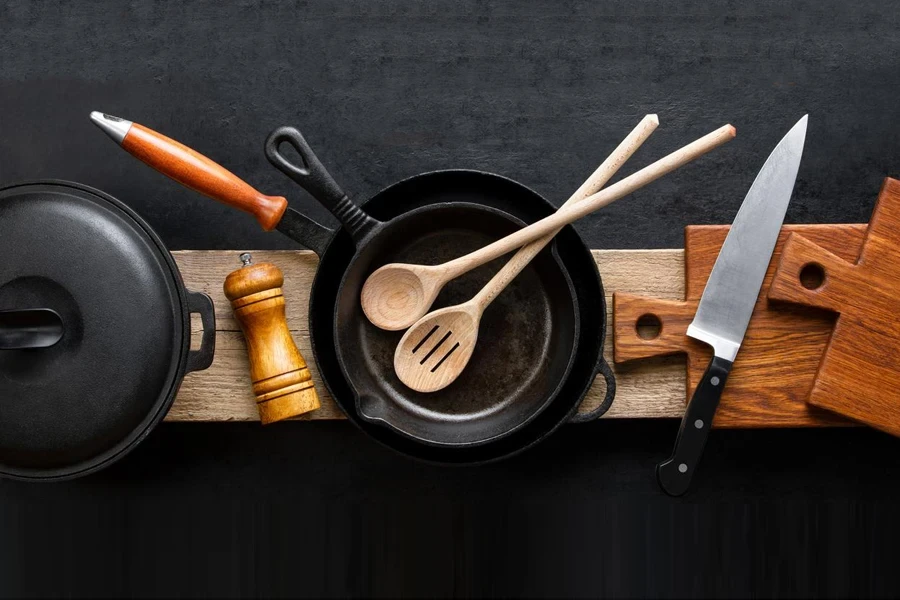
Best overall sets: Versatility and value
In the year 2024, there is a demand for versatile cooking tool kits that provide value. These sets are crafted to handle a range of kitchen tasks and include tools such as spatulas, tongs, whisks, ladles, and turners. The top-notch kits strike a balance between practicality and affordability, being constructed from materials like silicone and stainless steel that offer heat resistance and facilitate cleaning. Furthermore, these sets often come with items like peelers, measuring spoons, and utensil holders, making them suitable for both home chefs and culinary professionals.
Premium choices for professional settings
Top-tier cooking utensil collections are designed for use in professional kitchens with a focus on efficiency and durability while maintaining precision in tasks such as preparation and cooking techniques. These collections usually consist of top-grade stainless steel tools that are ergonomically designed to provide comfort during long hours of usage. Moreover, they come equipped with utensils tailored to culinary requirements and sport a sophisticated appearance suitable for professional settings. Despite the high cost associated with these sets, they deliver dependability and effectiveness in high-pressure culinary scenarios.
Eco-friendly and sustainable options
Sustainability is becoming increasingly crucial today, which has led to a rise in demand for eco-cooking utensil sets crafted from materials such as bamboo and recycled stainless steel, along with food-grade silicone options available. Bamboo is a choice due to its renewability and ability to biodegrade naturally over time; these sets are known for their durability and long lifespan while also helping to minimize waste by being packaged in recyclable materials. It is a fantastic option for individuals looking for environmentally conscious kitchen tools that deliver top-notch performance without any compromises!
Budget-friendly sets without compromising quality
Cookware sets that are easy on the budget include kitchen tools made from materials like silicone and nylon. They offer reliable performance for everyday cooking tasks without the fancy features of pricier sets but focus on durability and ease of use for budget-conscious kitchens.
Conclusion
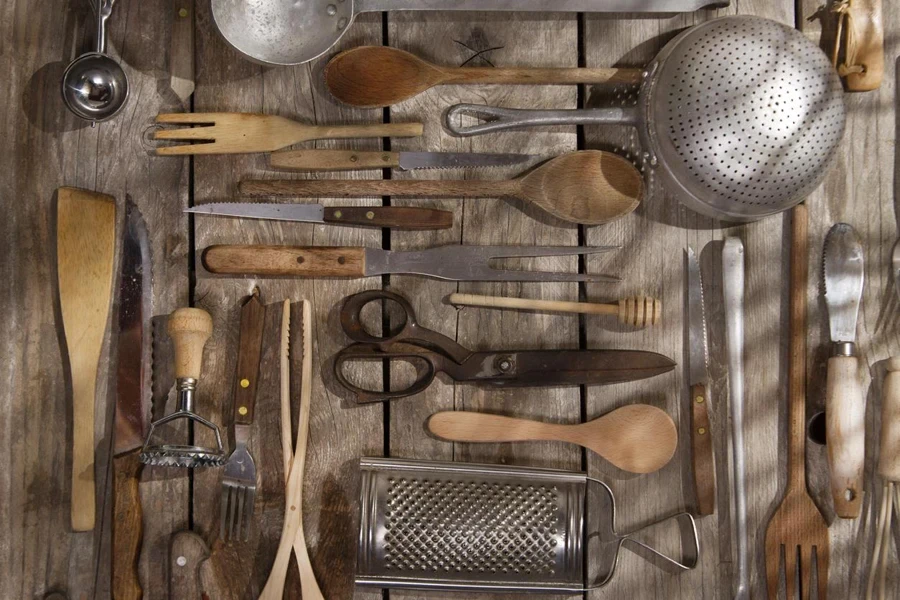
Choosing cooking utensils for the year 2025 involves considering factors like what materials they’re made of and how durable they are, as well as how easy they are to clean and how nice they look in your kitchen decor scheme. There is a range of options in stores. Some sets are multipurpose and offer great deals, while others are top-of-the-line collections aimed at professional chefs. Moreover, there are budget-friendly options to choose from that meet the rising demand for sustainable products without sacrificing quality. When making decisions in this field, it’s important to consider these factors to make sure that the tools selected not only serve purposes but also improve the overall cooking experience in any kitchen environment.




